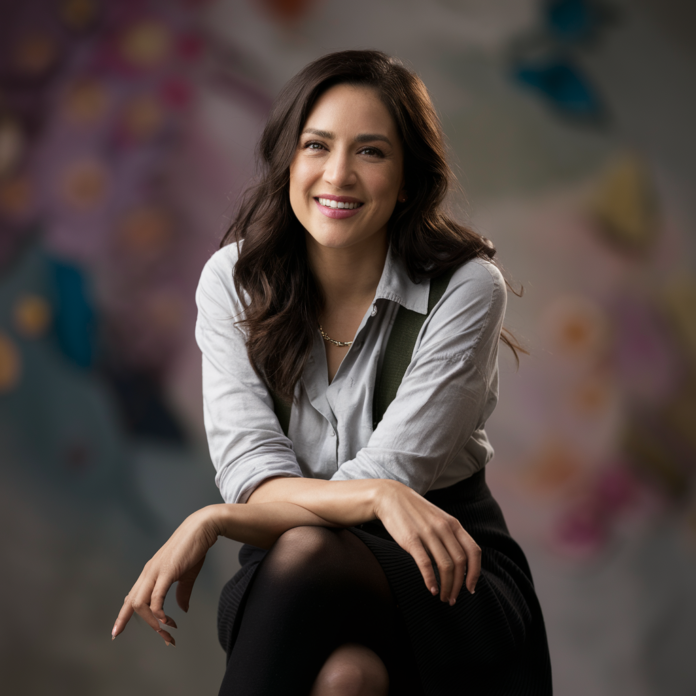Introduction
In the vibrant world of contemporary art and cultural expression, Irmarie Márquez stands out as a dynamic force—blending visual storytelling, activism, and Afro-Caribbean heritage into a powerful artistic voice. Born and raised in Puerto Rico, Márquez has cultivated a unique practice that spans painting, installation, performance, and community engagement, earning recognition both on the island and internationally. Her work often explores themes of identity, diaspora, and resilience, weaving personal narrative with broader sociopolitical commentary. But who is the woman behind these compelling creations? How does her cultural background influence her art? And what makes her approach to creativity so distinctive in today’s art world?
This article delves into Irmarie Márquez’s artistic journey, examining her major works, creative philosophy, and the impact she’s made at the intersection of art and social change. From her early influences to her current projects, we’ll explore how she challenges conventional boundaries and inspires new conversations through her multifaceted practice.
1. Roots and Formation: The Making of an Artist
Irmarie Márquez’s artistic identity is deeply rooted in her Puerto Rican heritage and Afro-Caribbean lineage, elements that permeate her work with visceral authenticity. Growing up in Puerto Rico, she was immersed in a culture rich with oral traditions, vibrant festivals, and a complex colonial history—all of which later became central themes in her art. Her formal training began at the Escuela de Artes Plásticas y Diseño de Puerto Rico, where she honed her technical skills while developing a critical perspective on art’s role in society.
However, it was her exposure to community-based practices and activist circles that truly shaped her approach. Early collaborations with local grassroots organizations taught her that art could be both a personal outlet and a tool for collective empowerment, a duality that continues to define her practice. This foundation—part academic, part activist—equipped her with a unique lens through which to explore issues like racial identity, gender, and cultural memory, setting her apart from peers who prioritized aesthetics over substance.
2. Signature Themes: Identity, Memory, and Resistance
At the core of Irmarie Márquez’s work lies an unflinching exploration of belonging and displacement, particularly through the lens of Afro-Puerto Rican experiences. Her pieces often incorporate symbolic materials—such as hair, textiles, and found objects—to evoke themes of ancestry and resilience. For example, in her acclaimed series “Trenzas y Memorias” (Braids and Memories), she used black hair as a metaphor for cultural preservation, intertwining strands with historical documents and photographs to visualize the untold stories of her community.
Another recurring motif is the body as a site of political and personal struggle. In performances like “Carga” (Load), Márquez carried sacks filled with sugarcane debris through urban spaces, echoing the labor of her ancestors while interrogating contemporary erasures of Black Puerto Rican history.
3. Mediums and Methods: A Practice Without Limits
What makes Márquez’s artistry particularly compelling is her refusal to be confined to a single medium. She fluidly moves between:
-
Painting and Mixed Media: Her canvases layer acrylics, collage, and text, creating textured narratives that challenge viewers to look beyond surface beauty.
-
Installation and Site-Specific Work: Pieces like “Casas Ausentes” (Absent Houses) used reclaimed wood and domestic objects to memorialize homes lost to gentrification in San Juan.
-
Participatory Art: Projects such as “Talleres de la Memoria” (Memory Workshops) invite communities to co-create art as a means of healing and documentation.
4. Recognition and Impact: Bridging Art and Advocacy
While Márquez’s work has been exhibited in galleries from San Juan to New York, her influence extends far beyond traditional art spaces. She’s been instrumental in:
-
Amplifying Afro-Puerto Rican Narratives: Through collaborations with scholars and activists, she’s helped center Black Puerto Rican history in national discourse.
-
Mentoring Emerging Artists: Her workshops prioritize art as a vehicle for social justice, empowering a new generation to merge creativity with activism.
-
Challenging Institutional Barriers: By critiquing the underrepresentation of Afro-Latinx artists in mainstream circuits, she’s pushing for more inclusive curatorial practices.
Her accolades—including grants from the Puerto Rican Arts Initiative and features in Hyperallergic—speak to her growing prominence as both an artist and a cultural advocate.
5. The Future: Where Will Her Work Go Next?
As Márquez continues to evolve, several exciting directions emerge:
-
International Collaborations: Plans to partner with Afro-diasporic artists in Brazil and Cuba could expand her exploration of transnational Black identity.
-
Public Art Projects: Proposed large-scale installations aim to transform urban landscapes into sites of memory and resistance.
-
Archival Research: Upcoming works may delve deeper into historical documents, reimagining erased histories through speculative art.
Conclusion
Irmarie Márquez is more than an artist; she’s a storyteller, archivist, and agitator whose work redefines what art can achieve. By intertwining the personal with the political, and the aesthetic with the activist, she offers a blueprint for how creativity can illuminate, disrupt, and heal.
FAQ: Irmarie Márquez
1. Where can I see Irmarie Márquez’s work?
Her pieces are showcased in Puerto Rican galleries like Beta-Local, and she frequently posts updates on Instagram (@irmariemarquez).
2. What inspires her artistic themes?
Afro-Caribbean traditions, colonial histories, and everyday acts of resistance deeply inform her practice.
3. Does she work with communities outside Puerto Rico?
Yes—she’s collaborated with diaspora groups in the U.S. and plans to expand to other Caribbean and Latin American contexts.
4. How does she view the role of art in society?
As a catalyst for dialogue and change, not just decoration or passive observation.
5. Has she written about her artistic philosophy?
She’s contributed essays to art journals and anthologies, often discussing decolonial aesthetics and collaborative creation.



